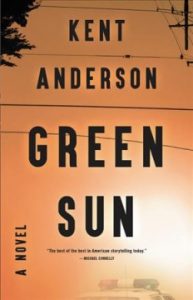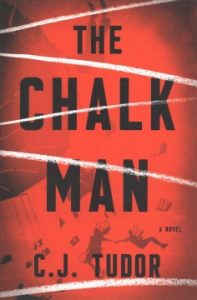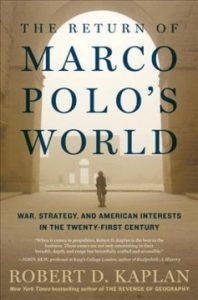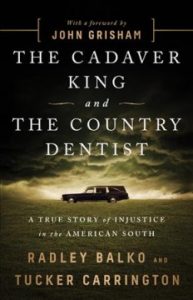And check out today’s Google Doodle, which celebrates our namesake, George Peabody!

Today is the 151st anniversary of Peabody receiving the Congressional Gold Medal, one of the two highest civilian awards in the United States, given to a persons “who have performed an achievement that has an impact on American history and culture that is likely to be recognized as a major achievement in the recipient’s field long after the achievement.”
Peabody’s impact has certainly been long-lasting. Born into a poor family in South Danvers (what is now Peabody), George Peabody knew need and hunger growing up, and was only able to attend a few years of schooling. As a result, he was notoriously thrifty as an adult (both in his private life and with his employees), but was also a dedicated philanthropist. He established the banking firm of “George Peabody & Company”, which evolved, eventually into the firm JPMorgan Chase. The fortune he made from that endeavor provided the capital which he used to make his enormous and lasting donations.
In the UK, Peabody established the Peabody Trust, which is still among London’s largest affordable-housing associations. Here in the United States, Peabody largely focused on providing funds for public education. In 1852, he donated $217,000 to establish the Peabody Institute in his home town (that’s us!), and four years later, he donated $100,000 to the Peabody Institute in Danvers (they of the stunning building near the duck pond in Danvers). In today’s currency, those donations are the equivalent (approximately) of $6.8 million and $2.85 million. Ten years later, he donated the funds to build Georgetown’s public library (hello, Georgetown friends!) in honor of his mother. He also established the Peabody Academy of Science in Salem, Massachusetts, which we know today as the Peabody Essex Museum.
Peabody also donated $3.5 million to establish the Peabody Education Fund in 1867 to provide educational funds for the children of the south following the Civil War (in today’s currency, that $3.5 million would be approximately $56,455,000). The city of Baltimore, where Peabody enjoyed his first financial success, also benefited: The Peabody Institute in Baltimore (today known as the Peabody Institute of The Johns Hopkins University,) is the oldest conservatory in the U.S. Today’s Google Doodle was actually created by students at George Peabody Elementary School in San Francisco, California, another site of George Peabody’s remarkable legacy.
So what better way to honor our namesake than with a selection of some of the book that have scurried onto our shelves this week, and are eager to make your acquaintance!

 Happiness: two pedestrians to collide―Jean, an American studying the habits of urban foxes, and Attila, a Ghanaian psychiatrist there to deliver a keynote speech. Attila has arrived in London with two tasks: to deliver a keynote speech on trauma, as he has done many times before; and to contact the daughter of friends, his “niece” who hasn’t called home in a while. The daughter, Ama, has been swept up in an immigration crackdown, and now her young son Tano is missing. When Attila runs into Jean again, she mobilizes the network of rubbish men she uses as volunteer fox spotters. Security guards, hotel doormen, traffic wardens―mainly West African immigrants who work the myriad streets of London―come together to help. As the search for Tano continues, a deepening friendship between Attila and Jean unfolds, leading Attila to reconsider his own concepts about trauma, and the connections to the world around him. This is a book that deals with difficult issues with dignity and grace, and weaves a tale that earned a starred review from Booklist, who explained, “The overarching message tucked into Scottish and Sierra Leonian writer Forna’s quietly resonant novel is this: Every living thing is the net sum of its history, and we carry the weight of our past on our shoulders…Forna’s novel is ultimately a mesmerizing tale studded with exquisite writing.”
Happiness: two pedestrians to collide―Jean, an American studying the habits of urban foxes, and Attila, a Ghanaian psychiatrist there to deliver a keynote speech. Attila has arrived in London with two tasks: to deliver a keynote speech on trauma, as he has done many times before; and to contact the daughter of friends, his “niece” who hasn’t called home in a while. The daughter, Ama, has been swept up in an immigration crackdown, and now her young son Tano is missing. When Attila runs into Jean again, she mobilizes the network of rubbish men she uses as volunteer fox spotters. Security guards, hotel doormen, traffic wardens―mainly West African immigrants who work the myriad streets of London―come together to help. As the search for Tano continues, a deepening friendship between Attila and Jean unfolds, leading Attila to reconsider his own concepts about trauma, and the connections to the world around him. This is a book that deals with difficult issues with dignity and grace, and weaves a tale that earned a starred review from Booklist, who explained, “The overarching message tucked into Scottish and Sierra Leonian writer Forna’s quietly resonant novel is this: Every living thing is the net sum of its history, and we carry the weight of our past on our shoulders…Forna’s novel is ultimately a mesmerizing tale studded with exquisite writing.”
 Green Sun: Those of you loving the ’80’s nostalgia that is seeping into tv and literature lately will love this newest release from fan-favorite Kent Anderson. It’s 1983 in Oakland, California, and Officer Hanson, a Vietnam veteran, has abandoned academia for the life-and-death clarity of police work, a way to live with the demons that followed him home from the war. But Hanson knows that justice requires more than simply enforcing the penal code. He believes in becoming a part of the community he serves–which is why, unlike most officers, he chooses to live in the same town where he works. This strategy serves him well…to a point. He forges a precarious friendship with Felix Maxwell, the drug king of East Oakland, based on their shared sense of fairness and honor. He falls in love with Libya the moment he sees her, a confident and outspoken black woman. He is befriended by Weegee, a streetwise eleven-year-old who is primed to become a dope dealer. Every day, every shift, tests a cop’s boundaries between the man he wants to be and the officer of the law he’s required to be. At last an off-duty shooting forces Hanson to finally face who he is, and which side of the law he belongs on. Anderson has the ability to tell a difficult story with compassion, and this tale is no less gripping for its fundamental humanity. NPR agrees, noting in its review “Green Sun succeeds on so many levels, it’s hard to keep count. . . . Hanson is a fascinating and memorable character, but the real star of Green Sun is Anderson’s writing. . . . Anderson is adept at finding a terrible kind of beauty in the worst circumstances, which makes Green Sun difficult to put down even when it’s emotionally painful to keep reading. Above all, it’s a stunning meditation on power, violence and the intractability of pain, which Anderson seems to understand all too well.”
Green Sun: Those of you loving the ’80’s nostalgia that is seeping into tv and literature lately will love this newest release from fan-favorite Kent Anderson. It’s 1983 in Oakland, California, and Officer Hanson, a Vietnam veteran, has abandoned academia for the life-and-death clarity of police work, a way to live with the demons that followed him home from the war. But Hanson knows that justice requires more than simply enforcing the penal code. He believes in becoming a part of the community he serves–which is why, unlike most officers, he chooses to live in the same town where he works. This strategy serves him well…to a point. He forges a precarious friendship with Felix Maxwell, the drug king of East Oakland, based on their shared sense of fairness and honor. He falls in love with Libya the moment he sees her, a confident and outspoken black woman. He is befriended by Weegee, a streetwise eleven-year-old who is primed to become a dope dealer. Every day, every shift, tests a cop’s boundaries between the man he wants to be and the officer of the law he’s required to be. At last an off-duty shooting forces Hanson to finally face who he is, and which side of the law he belongs on. Anderson has the ability to tell a difficult story with compassion, and this tale is no less gripping for its fundamental humanity. NPR agrees, noting in its review “Green Sun succeeds on so many levels, it’s hard to keep count. . . . Hanson is a fascinating and memorable character, but the real star of Green Sun is Anderson’s writing. . . . Anderson is adept at finding a terrible kind of beauty in the worst circumstances, which makes Green Sun difficult to put down even when it’s emotionally painful to keep reading. Above all, it’s a stunning meditation on power, violence and the intractability of pain, which Anderson seems to understand all too well.”
 The Chalk Man: Another ’80’s nostalgia novel here, but C.J. Tudor’s debut is a taut psychological thriller that has, apparently, kept a number of respected authors awake with its chilling premise. In 1986, Eddie and his friends are just kids on the verge of adolescence. They spend their days biking around their sleepy English village and looking for any taste of excitement they can get. The chalk men are their secret code: little chalk stick figures they leave for one another as messages only they can understand. But then a mysterious chalk man leads them right to a dismembered body, and nothing is ever the same. In 2016, Eddie is fully grown, and thinks he’s put his past behind him. But then he gets a letter in the mail, containing a single chalk stick figure. When it turns out that his friends got the same message, they think it could be a prank –until one of them turns up dead. That’s when Eddie realizes that saving himself means finally figuring out what really happened all those years ago. Full of flash-backs, twists, and revelations about its characters that will linger long after the final page, this is a book that Kirkus noted will speak to fans “of the kids of Stand by Me and even IT…[the] first-person narration alternates between past and present, taking full advantage of chapter-ending cliffhangers. A swift, cleverly plotted debut novel that ably captures the insular, slightly sinister feel of a small village. Children of the 1980’s will enjoy the nostalgia.”
The Chalk Man: Another ’80’s nostalgia novel here, but C.J. Tudor’s debut is a taut psychological thriller that has, apparently, kept a number of respected authors awake with its chilling premise. In 1986, Eddie and his friends are just kids on the verge of adolescence. They spend their days biking around their sleepy English village and looking for any taste of excitement they can get. The chalk men are their secret code: little chalk stick figures they leave for one another as messages only they can understand. But then a mysterious chalk man leads them right to a dismembered body, and nothing is ever the same. In 2016, Eddie is fully grown, and thinks he’s put his past behind him. But then he gets a letter in the mail, containing a single chalk stick figure. When it turns out that his friends got the same message, they think it could be a prank –until one of them turns up dead. That’s when Eddie realizes that saving himself means finally figuring out what really happened all those years ago. Full of flash-backs, twists, and revelations about its characters that will linger long after the final page, this is a book that Kirkus noted will speak to fans “of the kids of Stand by Me and even IT…[the] first-person narration alternates between past and present, taking full advantage of chapter-ending cliffhangers. A swift, cleverly plotted debut novel that ably captures the insular, slightly sinister feel of a small village. Children of the 1980’s will enjoy the nostalgia.”
 The Return of Marco Polo’s World: War, Strategy, and American Interests in the Twenty-First Century: In the late thirteenth century, Marco Polo began a decades-long trek from Venice to China. The strength of that Silk Road—the trade route between Europe and Asia—was a foundation of Kublai Khan’s sprawling empire. Now, in the early twenty-first century, the Chinese regime has proposed a land-and-maritime Silk Road that duplicates exactly the route Marco Polo traveled. In opening of this enlightening anthology, an essay recently released by the Pentagon’s Office of Net Assessment, Robert D. Kaplan lays out a blueprint of the world’s changing power politics that recalls the geo-politics late thirteenth century. Drawing on decades of firsthand experience as a foreign correspondent and military embed for The Atlantic, as well as encounters with preeminent realist thinkers, the essays in this book offer timely and insightful commentary on the role of the United States in the world that considers both where we’ve been, and some suggestions as we move forward. Kirkus Reviews gave this collection a starred review, calling it a “Thoughtful, unsettling, but not apocalyptic analyses of world affairs flow steadily off the presses, and this is a superior example. . . . Presented with enough verve and insight to tempt readers to set it aside to reread in a few years.”
The Return of Marco Polo’s World: War, Strategy, and American Interests in the Twenty-First Century: In the late thirteenth century, Marco Polo began a decades-long trek from Venice to China. The strength of that Silk Road—the trade route between Europe and Asia—was a foundation of Kublai Khan’s sprawling empire. Now, in the early twenty-first century, the Chinese regime has proposed a land-and-maritime Silk Road that duplicates exactly the route Marco Polo traveled. In opening of this enlightening anthology, an essay recently released by the Pentagon’s Office of Net Assessment, Robert D. Kaplan lays out a blueprint of the world’s changing power politics that recalls the geo-politics late thirteenth century. Drawing on decades of firsthand experience as a foreign correspondent and military embed for The Atlantic, as well as encounters with preeminent realist thinkers, the essays in this book offer timely and insightful commentary on the role of the United States in the world that considers both where we’ve been, and some suggestions as we move forward. Kirkus Reviews gave this collection a starred review, calling it a “Thoughtful, unsettling, but not apocalyptic analyses of world affairs flow steadily off the presses, and this is a superior example. . . . Presented with enough verve and insight to tempt readers to set it aside to reread in a few years.”
 The Cadaver King and the Country Dentist: A True Story of Injustice in the American South: In 1990, Levon Brooks was arrested for the mrape and murder of a three-year-old girl in rural Mississippi. Two years later, Kennedy Brewer was arrested and accused of killing his girlfriend’s three-year-old daughter. Both men waited two to three years in prison before their trial, and together, they spent a combined thirty years in prison before finally being exonerated in 2008. Meanwhile, the real killer remained free. In this haunting work of investigative non-fiction, Radley Balko and Tucker Carrington recount the story of how the criminal justice system allowed two innocent men to be convicted of these crimes, and how two men, Dr. Steven Hayne and Dr. Michael West, built successful careers on the back of that structure. For nearly two decades, Hayne, a medical examiner, performed the vast majority of Mississippi’s autopsies, while his friend Dr. West, a local dentist, pitched himself as a forensic jack-of-all-trades. Together they became the go-to experts for prosecutors and helped put countless Mississippians in prison. But then some of those convictions began to fall apart. This is a book about justice, and how the courts and Mississippi’s death investigation system–a relic of the Jim Crow era–failed to deliver it for its citizens. The authors argue that bad forensics, structural racism, and institutional failures are at fault, raising sobering questions about our ability and willingness to address these crucial issues. Publisher’s Weekly gave this troubling, fascinating work a starred review, calling it “A clear and shocking portrait of the structural failings of the U.S. criminal justice system… This eminently readable book builds a hard-to-ignore case for comprehensive criminal justice reform.”
The Cadaver King and the Country Dentist: A True Story of Injustice in the American South: In 1990, Levon Brooks was arrested for the mrape and murder of a three-year-old girl in rural Mississippi. Two years later, Kennedy Brewer was arrested and accused of killing his girlfriend’s three-year-old daughter. Both men waited two to three years in prison before their trial, and together, they spent a combined thirty years in prison before finally being exonerated in 2008. Meanwhile, the real killer remained free. In this haunting work of investigative non-fiction, Radley Balko and Tucker Carrington recount the story of how the criminal justice system allowed two innocent men to be convicted of these crimes, and how two men, Dr. Steven Hayne and Dr. Michael West, built successful careers on the back of that structure. For nearly two decades, Hayne, a medical examiner, performed the vast majority of Mississippi’s autopsies, while his friend Dr. West, a local dentist, pitched himself as a forensic jack-of-all-trades. Together they became the go-to experts for prosecutors and helped put countless Mississippians in prison. But then some of those convictions began to fall apart. This is a book about justice, and how the courts and Mississippi’s death investigation system–a relic of the Jim Crow era–failed to deliver it for its citizens. The authors argue that bad forensics, structural racism, and institutional failures are at fault, raising sobering questions about our ability and willingness to address these crucial issues. Publisher’s Weekly gave this troubling, fascinating work a starred review, calling it “A clear and shocking portrait of the structural failings of the U.S. criminal justice system… This eminently readable book builds a hard-to-ignore case for comprehensive criminal justice reform.”
Until next week, beloved patrons: Happy Reading!

How amazing! I never knew this. Thank you,Mr. Peabody!